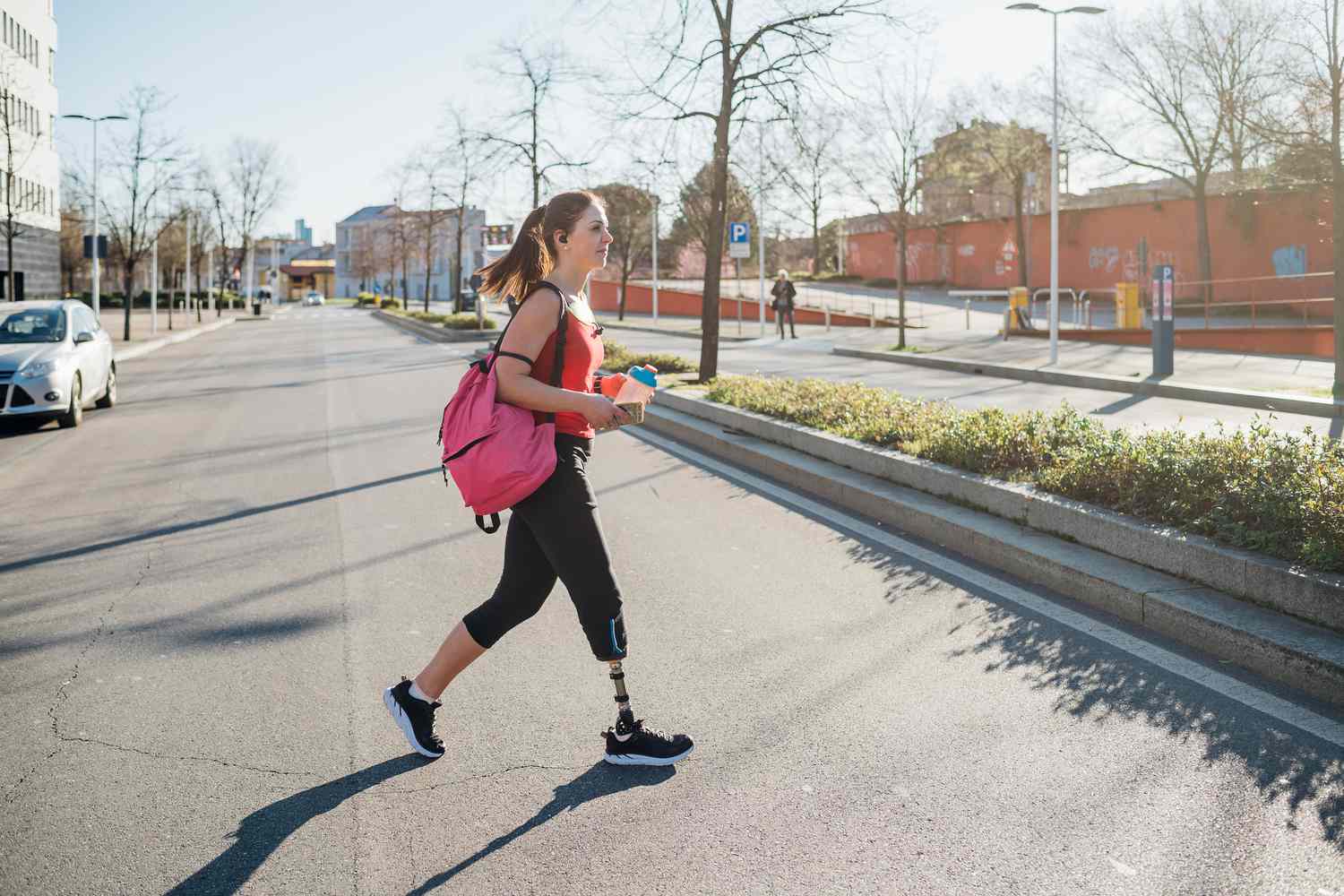Home>Misc>Featured>Should I Jog On The Left Side Of The Sidewalk?


Featured
Should I Jog On The Left Side Of The Sidewalk?
Modified: October 24, 2023
Looking for Featured Jogging Tips? Discover the benefits of jogging on the left side of the sidewalk and optimize your running routine for safety and efficiency.
Introduction
Welcome to the bustling world of sidewalk etiquette, where the unspoken rules of pedestrian travel dictate our daily interactions. Among these unwritten guidelines, one contentious issue often emerges – whether it is acceptable for someone to jog on the left side of the sidewalk. It’s a topic that has sparked debates, aroused frustration, and even led to a few heated encounters.
As you stroll down the sidewalk, enjoying the fresh air and taking in the sights, you may encounter those who break tradition and jog on the left. It can be a surprising sight, as most people tend to follow the convention of walking or jogging on the right side. But before we delve into the reasons and potential issues surrounding this peculiar choice, let’s first understand the broader sidewalk etiquette that governs our daily life.
When walking on a sidewalk, there is an unspoken understanding that we should keep to the right side to allow smooth and orderly passage for all. This convention helps in minimizing confusion and ensures a harmonious flow of pedestrian traffic. However, like any other societal norm, there are exceptions to this rule, and jogging on the left side is one of them.
So, why do some runners choose to jog on the left side? Is there any merit to this approach, or is it simply an act of defiance against convention? In the next section, we will explore the reasons behind this unusual choice and shed light on the motivations of those who opt for the left side of the sidewalk.
Understanding the Sidewalk Etiquette
Before we delve into the specifics of jogging on the left side of the sidewalk, it’s important to grasp the foundational principles of sidewalk etiquette. The unwritten rules that govern our sidewalk interactions are rooted in the desire for efficient and respectful pedestrian travel.
The most fundamental guideline is to keep to the right side of the sidewalk. This allows for a smooth and organized flow of foot traffic, similar to how we drive on the right side of the road. By adhering to this convention, walkers, joggers, and cyclists can navigate the sidewalk without impeding each other’s progress.
When encountering other pedestrians, it is customary to yield the right of way to those coming from the opposite direction. This simple act of stepping aside ensures that everyone can pass without obstruction. A brief moment of recognition, such as a nod or a smile, can further enhance the sense of mutual respect and consideration.
Additionally, it is crucial to maintain awareness of one’s surroundings. This means refraining from obstructing the sidewalk by stopping abruptly or walking in large groups that span the entire width. Being mindful of other pedestrians allows for a smooth and enjoyable journey for all.
While these guidelines lay the groundwork for harmonious pedestrian travel, there are instances when deviations from the norm occur. Jogging on the left side of the sidewalk is one such exception. To understand the motivations behind this choice, let’s explore some of the reasons why joggers may opt for the unconventional path.
Reasons for Jogging on the Left Side
When it comes to jogging on the left side of the sidewalk, there are a few reasons why some individuals may choose this unconventional approach. While it may seem counterintuitive at first, these motivations shed light on the varying perspectives and personal preferences that shape our sidewalk behavior.
One common reason for opting to jog on the left side is for better visibility. By jogging against the flow of oncoming pedestrian traffic, runners can more easily see and react to approaching individuals. This increased visibility minimizes the risk of collisions and allows runners to adjust their pace accordingly.
Another consideration is related to safety. Jogging on the left side can create a buffer zone between the runner and vehicles on the road. With this positioning, joggers can maintain distance from passing cars, reducing the possibility of accidents or close encounters.
Furthermore, some joggers may choose the left side to prioritize their personal comfort. It can be a matter of habit or preference, with certain individuals finding the feeling of running on the left more enjoyable or natural. Just like some people have a dominant hand, some joggers may have a preferred side for running that aligns with their physical capabilities or jogging style.
In certain cases, joggers who prioritize their fitness goals may choose the left side strategically. By jogging against the flow of pedestrian traffic, runners can increase the intensity of their workout. The resistance created by moving against the flow can provide a more challenging exercise routine, pushing the limits of their physical endurance.
While these reasons shed light on the motivations behind jogging on the left side, it is important to note that preferences may vary among individuals. Each jogger may have their own unique combination of factors that influence their chosen side of the sidewalk.
Now that we understand the reasons why some joggers choose to break convention by jogging on the left side, let’s explore the potential issues and challenges that can arise from this practice.
Potential Issues with Jogging on the Left Side
While jogging on the left side of the sidewalk may have its merits, it can also give rise to certain challenges and issues that affect both the jogger and other pedestrians. Understanding these potential drawbacks is essential for maintaining a harmonious sidewalk experience for all.
One significant issue with jogging on the left side is the disruption it can cause to the established flow of pedestrian traffic. When most people adhere to the convention of keeping to the right side, a jogger moving against the flow can create confusion and hinder the smooth movement of others. This disruption may lead to frustration or even potential collisions if individuals are not vigilant.
Another issue stems from the fact that not everyone may expect a jogger to be coming from the opposite direction. Pedestrians who are accustomed to the conventional right-side jogging may be caught off guard when faced with a runner on the left. This unexpected encounter can lead to momentary hesitations or even minor accidents if quick reactions are not made.
Jogging on the left side can also pose challenges when it comes to passing slower pedestrians. As a jogger moves against the flow, they may need to navigate their way through individuals going in the same direction. This can require extra attentiveness and communication to ensure a safe and smooth passage for both the jogger and others.
Additionally, jogging on the left side can compromise the visibility and safety of other pedestrians. Runners coming from the opposite direction may obstruct the view for walkers and joggers on the right side, potentially leading to unexpected collisions or near misses.
It is important to note that while these issues may occur, their severity largely depends on the density of pedestrian traffic and the awareness and consideration of all individuals involved. By being mindful of others and adapting to the prevailing sidewalk norms, many of these potential challenges can be mitigated.
In the next section, we will explore alternative options that joggers can consider to maintain a harmonious and safe sidewalk experience without resorting to jogging on the left side.
Alternatives to Jogging on the Left Side
For joggers who want to navigate the sidewalks while ensuring a smooth and respectful experience for everyone, there are alternatives to jogging on the left side that can be considered. These options provide viable solutions that balance individual preferences with the social norms of sidewalk etiquette.
One alternative is to adhere to the established convention of jogging on the right side of the sidewalk. By joining the majority of pedestrians who follow this practice, joggers can seamlessly integrate into the flow of foot traffic and minimize any potential disruptions. This approach ensures a straightforward and familiar experience for both the jogger and others using the sidewalk.
Another option is to utilize designated jogging or running tracks whenever available. Many cities and parks have designated areas specifically designed for runners, offering ample space and freedom to jog without the constraints of sidewalk conventions. These dedicated paths provide a safe and enjoyable environment for runners, allowing them to focus on their exercise without concerns about obstructing or surprising other pedestrians.
For joggers seeking a greater sense of safety and visibility, utilizing reflective clothing and accessories can be a valuable alternative. By making themselves more visible to both pedestrians and vehicles, runners can effectively mitigate the risks associated with running against the flow of traffic. Reflective clothing, armbands, or even wearable lights can greatly enhance a jogger’s visibility, ensuring that others can see and anticipate their presence.
Communication and awareness are crucial components of a harmonious sidewalk experience. Joggers can consider signaling their presence and intentions to other pedestrians by utilizing simple gestures, such as a friendly wave or a verbal indication of their intended path. This proactive approach helps diminish the likelihood of surprises and fosters a sense of collective understanding and cooperation among all sidewalk users.
Lastly, being flexible and receptive to adapting jogging routes can be an effective strategy. If a jogger encounters a particularly crowded or congested sidewalk, they can choose to alter their path or explore different routes that offer more space and less foot traffic. By proactively assessing the sidewalk conditions and making small navigational adjustments, joggers can maintain a comfortable and respectful presence without disrupting the flow of pedestrian traffic.
It’s important for joggers to find a balance between personal preferences and accommodating the needs of others on the sidewalk. By considering these alternatives, joggers can coexist with other pedestrians while still enjoying their run in a safe and considerate manner.
Conclusion
The topic of jogging on the left side of the sidewalk provokes various opinions and perspectives. While it may deviate from the established convention of keeping to the right side, there are reasons why some joggers make this choice. Whether it’s for better visibility, safety concerns, personal comfort, or fitness goals, these motivations highlight the diversity of preferences and considerations that shape our sidewalk behavior.
However, it’s important to recognize the potential issues that can arise from jogging on the left side. Disrupting the flow of pedestrian traffic, unexpected encounters, challenges in passing slower pedestrians, and compromised visibility for others are some of the challenges that can occur. By understanding these issues, joggers can strive for a more considerate and harmonious sidewalk experience.
Fortunately, there are viable alternatives available for joggers who want to maintain a positive sidewalk experience for everyone. Adhering to the convention of jogging on the right side, utilizing designated running tracks, enhancing visibility with reflective accessories, communicating intentions, and adjusting routes for crowded areas are all effective strategies that promote harmony and safety.
Sidewalk etiquette is a delicate balance between individual preferences and social norms. By being aware of our surroundings, respecting the flow of foot traffic, and considering the needs of others, we can create an environment where everyone can enjoy their journey on the sidewalk, whether they are walking, jogging, or cycling.
So, the next time you encounter someone jogging on the left side of the sidewalk, instead of frustration or confusion, let’s embrace the diversity of choices and respect each other’s paths. After all, the sidewalk is a shared space, and by navigating it with consideration and understanding, we can make our daily journeys more enjoyable for everyone involved.









